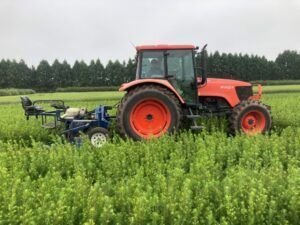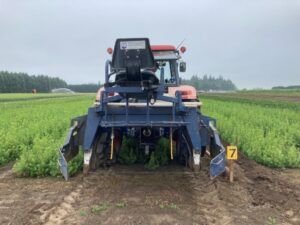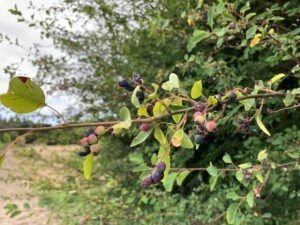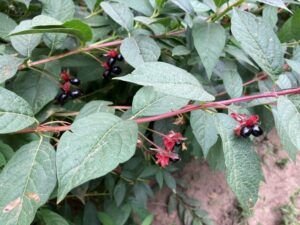Five things to know about the PMC for July 7, 2021
Sales
New sales orders for the new fiscal year are still being entered so there is not a sales report to report on. The fact that it is taking a while to get all of the orders entered suggests that the sales season is off to a strong start. Changes are also being made to the sales software configuration which takes considerable time and effort (thanks Jacquie and Lori). There is certainly a lot of chatter out there about potentially significant increases in conservation plantings. Time will tell. There are some on the books for next year and beyond.
June Financial Report
Lori has finished the June financial reports. Since the fiscal year ends on June 30, the June financial reports are always highly anticipated since they include totals for the whole fiscal year.
Total revenues for PMC Operations for the year were an all-time high of $1,222,141, which exceeded last year’s all-time high of $1,187,140. Of course, expenses were also at an all-time high of $1,198,341 which exceeded last year’s all-time high of $1,143,339.
Some of the more substantial increases were in accounting due to the review the accountant did, as well as covering 100% of all accounting costs for both the PMC and Executive Operations. Brokered plants cost was higher than usual but there is an offsetting increase in revenue for brokered plants. Cold storage was much higher because many customers held off receiving plants longer than usual, resulting in additional cold storage costs. Seasonal labor increased some largely due to an increase in the minimum wage on January 1. Net revenues were not an all-time high but at least they were not negative which was the concern going into harvest during a pandemic.
Overall, it was a good, but challenging, year. Hopefully, this year is another record setter but also hopefully, maybe it will be a little less challenging.
Root Pruning
The cultural practice that was the highlight this week was root pruning, or undercutting. That involves an implement called a root pruner which is pulled by a tractor. It has a blade that is pulled through the ground at a depth sufficient to cut the tips off of the roots of the plants. Removing the root tip causes the root system to branch out more, resulting in a fuller, more fibrous root system, which helps to create a more vigorous seedling with greater survivability. The drawback is if the blade is too shallow it could potentially cut the roots too short and kill the plant, so one needs to be careful and watchful when doing it.
Seed Collecting
Seed collection is in full swing, both for those seeds collected by the PMC and those collected by others. Serviceberry seeds have been the main focus this week. It is important to get the berries when they begin to turn purple. If one waits until the berries are soft, purple, and ripe there is a good chance the birds will get there first, particularly if there are Cedar Wax Wings around. Twinberry seed is also ready to be collected and Baldhip rose is not far off.
The species that have been collected so far have been plentiful. The recent hot spell has not seriously affected seed production yet. Hopefully, it doesn’t going forward. The big question is how it will affect conifer seed production. Most recent years have not been good cone years for conifers and seed supplies are dwindling. If it is a good year then collections should be maximized. An article in the online publication Wired from April 6 this year highlighted the pending seed shortage for conifers at a time when demand for seedlings is spiking. Seeds of a lot of conifer species are collected in late summer or early fall when they are ripe but before they fall out of the cone. Anyone is encouraged to contact us if they notice any of our native conifer species with an abundance of cones. We might be able to use them.
Upcoming
For the most part, the primary activities here for the next few weeks will be more of the same. Drought stressing will begin next week. A lot of the plants here are reaching a marketable size and do not need to get too much larger. Size can be controlled by root culturing practices such as root pruning and withholding irrigation. An added benefit is some can go dormant sooner which reduces the chances of early freeze damage. The drawback is if they are dried down too much, they could possibly die so one needs to carefully monitor soil moisture to avoid excess mortality.
Another upcoming activity is setting out traps for the Giant Asian Hornet, or Murder Hornet (that’s quite a name). WSU has a program that enlists Citizen Scientists to make and monitor homemade traps. This was done last year but fortunately, none were found in Skagit county, only in Whatcom County. This year’s trapping will be interesting since one was recently discovered in Snohomish County. We will keep everyone posted.
I hope this helps. Please let me know if you have any questions.
Jim Brown, WACD PMC Nursery Manager
https://wacdpmc.org/about-us




